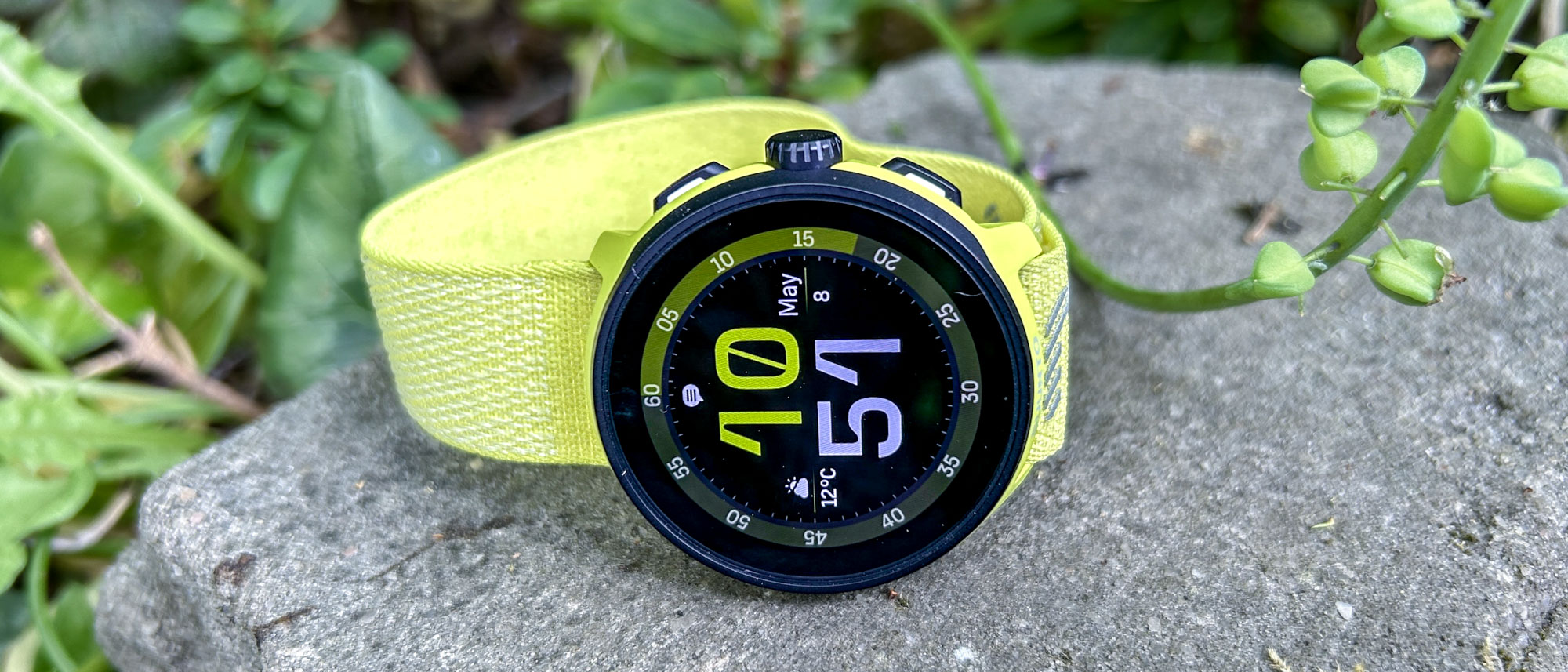Tom's Guide Verdict
The Suunto Run offers all the key features you need for sports tracking in an attractive, affordable package. It’s one of the best value watches for runners, and undercuts the alternatives from Garmin and Coros.
Pros
- +
Lightweight design with AMOLED display
- +
Detailed sports tracking
- +
Music storage
- +
Cheaper than rivals
Cons
- -
Short battery life
- -
HR reading sometimes too high during runs
- -
Low step counts
Why you can trust Tom's Guide
The Suunto Run is an impressive entry-level AMOLED sports watch that offers great value to runners in particular, undercutting the best running watches in its category like the Garmin Forerunner 165 and Coros Pace Pro.
While it doesn’t have all the features available on pricier watches like the Suunto Race S and Suunto Race, lacking offline maps for one, the Suunto Run does introduce some new features to the brand’s range, like music storage and a track run mode.
In my testing I’ve found the Suunto Run to be a reliable running buddy thanks to its accurate GPS tracking and extensive training analysis. In my Suunto Run review, I’ll explain why I think it’s a great budget-friendly option for new and experienced runners alike.
Suunto Run review: price and availability
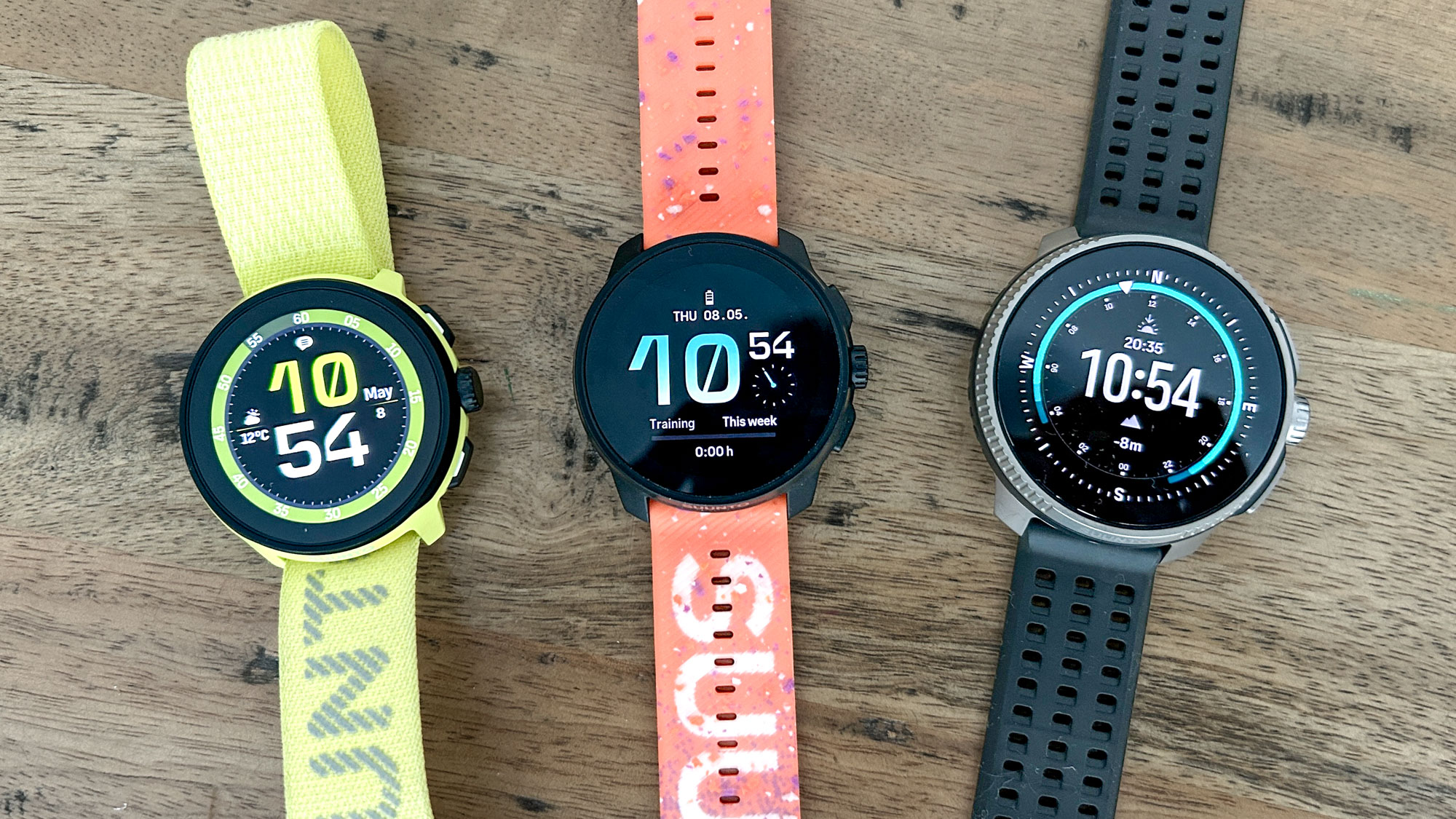
The Suunto Run launched on 13 May 2025 and costs $249 in the U.S. and £199 in the U.K., making it $100 cheaper than the Suunto Race S and also more affordable than the best entry-level AMOLED running watches from other brands, like the Garmin Forerunner 165 and Coros Pace Pro.
Suunto Run review: specs compared
| Row 0 - Cell 0 | Suunto Run | Suunto Race S | Garmin Forerunner 165 | Coros Pace Pro |
Price | $249/£199 | $349/£299 | $249.99/£249.99; $299.99/£289.99 (Music) | $349/£349 |
Size | 46 x 11.5mm | 45 x 11.4mm | 43 x 11.6mm | 46 x 14.15mm |
Display | 1.32in 466 x 466 AMOLED | 1.32in 466 x 466 AMOLED | 1.2in 390 x 390 AMOLED | 1.3in 416 x 416 AMOLED |
Bezel | Steel | Steel or titanium | Polymer | Polymer |
Screen | Gorilla glass | Gorilla glass | Glass | Glass |
Weight | 36g | 60g (steel), 53g (titanium) | 39g | 37g (nylon band), 49g (silicone band) |
Water resistance | 50m | 50m | 5ATM | 5ATM |
Battery life (watch mode) | Up to 12 days | Up to 9 days | Up to 11 days | 20 days (6 days always-on) |
Battery life (GPS) | Up to 20 hours (dual-band) | Up to 30 hours (dual-band) | 19 hours (all-systems GPS) | 38 hours (all-systems), 31 hours (dual-band) |
Storage | 4GB | 32GB | 4GB | 32GB |
Suunto Run review: design
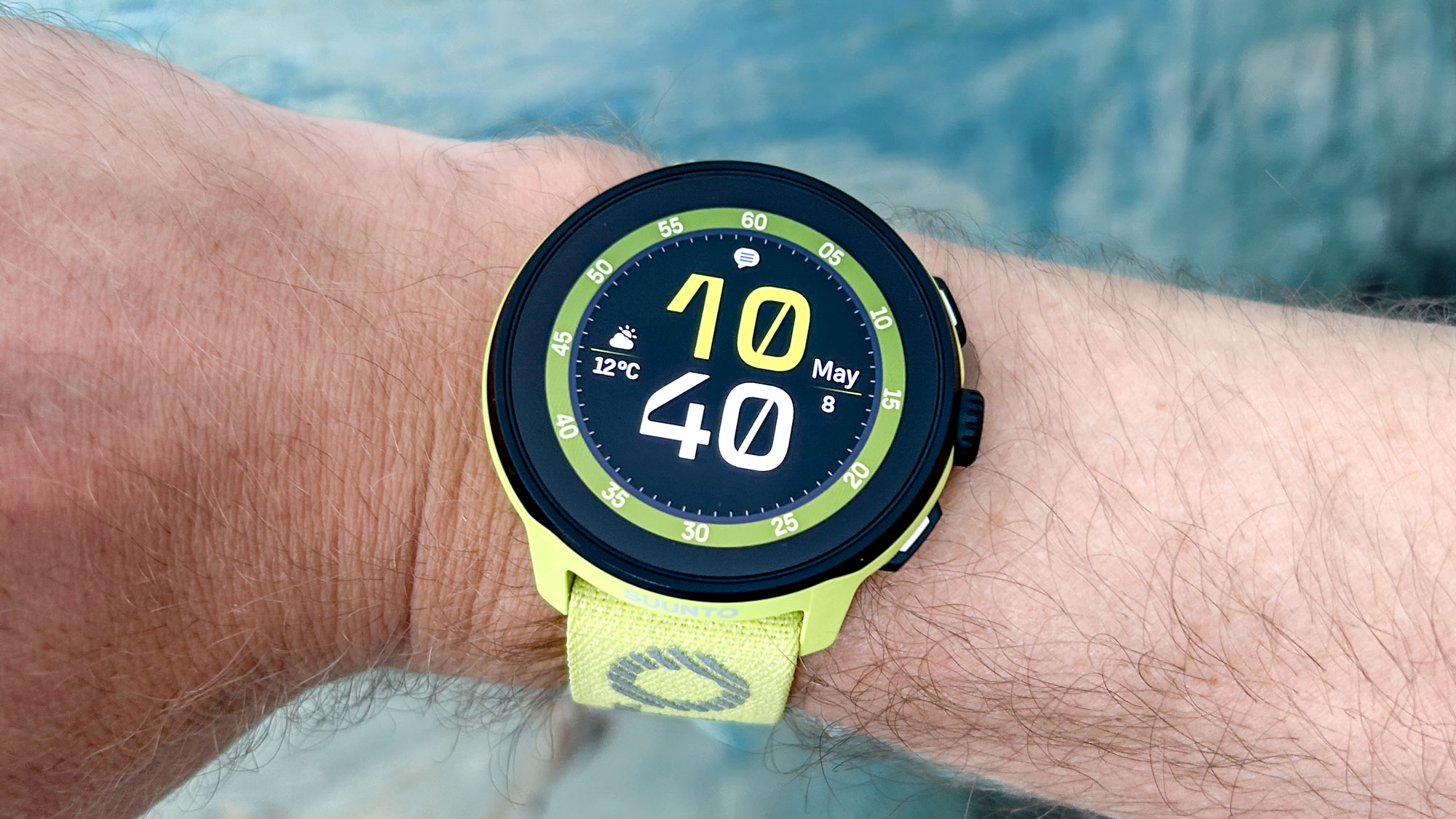
The Suunto Run comes in four colors — bright red, black and light grey as well as the lime yellow-green watch I tested.
It’s a thin and lightweight watch that comes with a nylon strap, which makes it feel even less intrusive and more comfortable to wear 24/7. You can also swap this strap for any 22mm band.
Unlike most watches at the cheaper end of the market, the Suunto Run is not completely made of plastic, having a thin steel bezel. It is mostly plastic though, but feels well-built and it’s waterproof to 50m.
Get instant access to breaking news, the hottest reviews, great deals and helpful tips.
The watch has three buttons, one of which is a digital dial you can use to scroll through menus and data screens, along with the 1.32in AMOLED touchscreen.
While the screen seems a little less bright to my eye than the ones on the Suunto Race and Suunto Race S despite having the same specs, it’s still clear to read in all conditions, including bright sunlight.
Under the hood there’s an altimeter, pulse oximeter and the same GPS chipset as the pricier Suunto models, which offers dual-band tracking for better accuracy.
The Suunto Run also has a new optical heart rate sensor that promises greater accuracy than the sensors on the Suunto Race and Race S.
You can connect to external heart rate sensors and running foot pods via Bluetooth, as well as headphones, but you can’t link cycling power meters to the watch, with Suunto reserving that feature for the more expensive multisport watches in its range.
I was able to connect the watch to a chest strap and headphones at the same time without problems during my testing.
There is only 4GB of storage on the watch, which will limit the amount of music you can store on it. This is a lot less than you get on the Suunto Race and Race S, but they need the space to store offline maps, which aren’t available on the Run.
Suunto Run review: sports tracking and training analysis
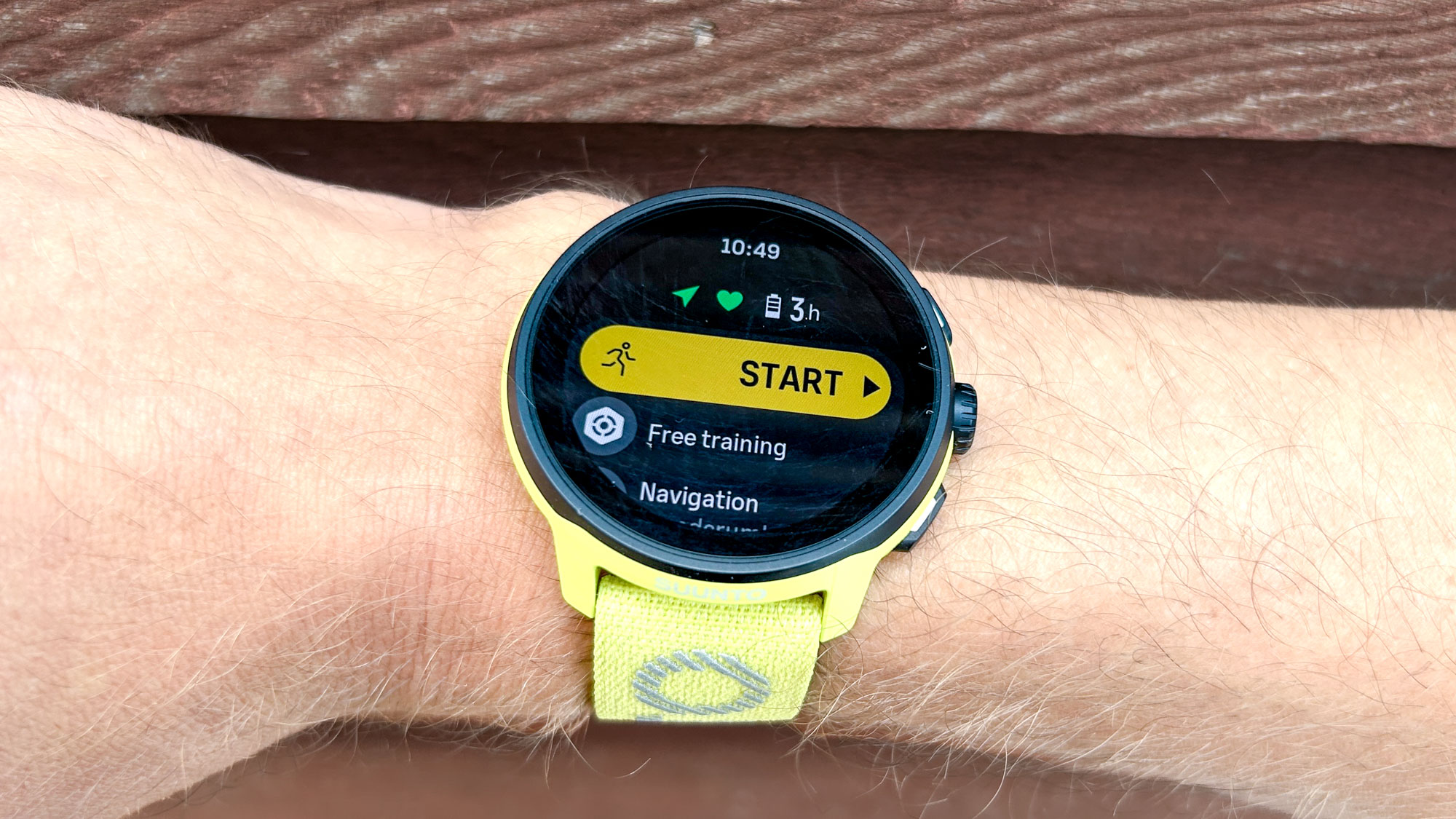
The Suunto Run has 34 different sports modes including open-water swimming and a new track run mode that offers much better distance and pace tracking than GPS alone.
I’m a track regular and use this feature a lot of Garmin, Coros and Apple watches, so I’m pleased to see it arrive on the Suunto Run. Suunto hasn’t said if/when it will be brought to the Race S and Race watches, but I’d hope it would be a standard feature across the range.
You can also create your own sports modes and it’s now easier to customize the data you see during activities than in the past with Suunto using the partner app.
Using the app you can also create interval workouts and send them to the watch to follow on your wrist, but you can’t use SuuntoPlus sport apps on the Run, only on Suunto’s more expensive watches.
These apps are basically extra data pages you can have in an activity for certain purposes, like tracking the hills you’ve climbed or see live Strava segments.
I find them complicated and rarely use them with any Suunto watch, and on a watch designed to be simple like the Run, I think leaving them off was the right call. However, some of the features they bring to the watches should be native data fields, in my opinion.
Once you’ve done your workout all the data feeds into the extensive training analysis available on the watch and in the Suunto app, which is powered by TrainingPeaks.
The data is presented colorfully on the watch using widgets, and once you get your head around terms like chronic training load there’s a lot you can glean from it to judge your efforts in training to get fitter without pushing too hard.
However, to the uninitiated it can be a little hard to unpack owing to the heavy use of acronyms and graphs rather than short text summaries.
Suunto Run review: GPS & HR accuracy
The Suunto Run uses the same Sony GPS chipset as the Suunto Race and Race S and has been as reliably accurate as those watches during my testing for distance and pace stats.
I compared it to several other watches during my runs, including the Garmin Fenix 8, and checked the GPS tracks afterwards, and the Suunto Run matched up closely to the other watches and didn’t produce any notable errors on the tracks.
The heart rate accuracy was also mostly good and an improvement on my experience with the Suunto Race and Race S, both of which were rarely correct for me during testing.
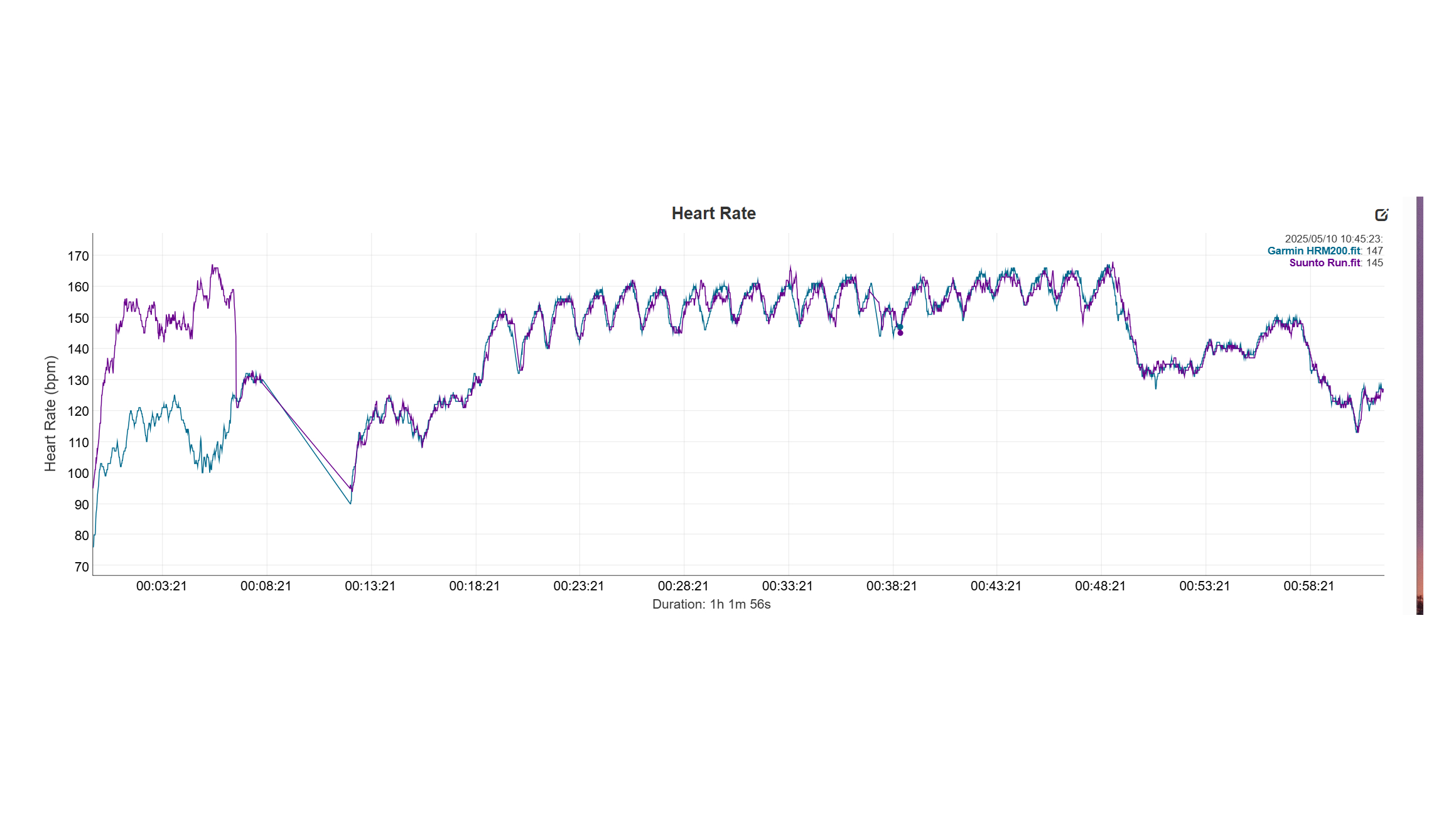
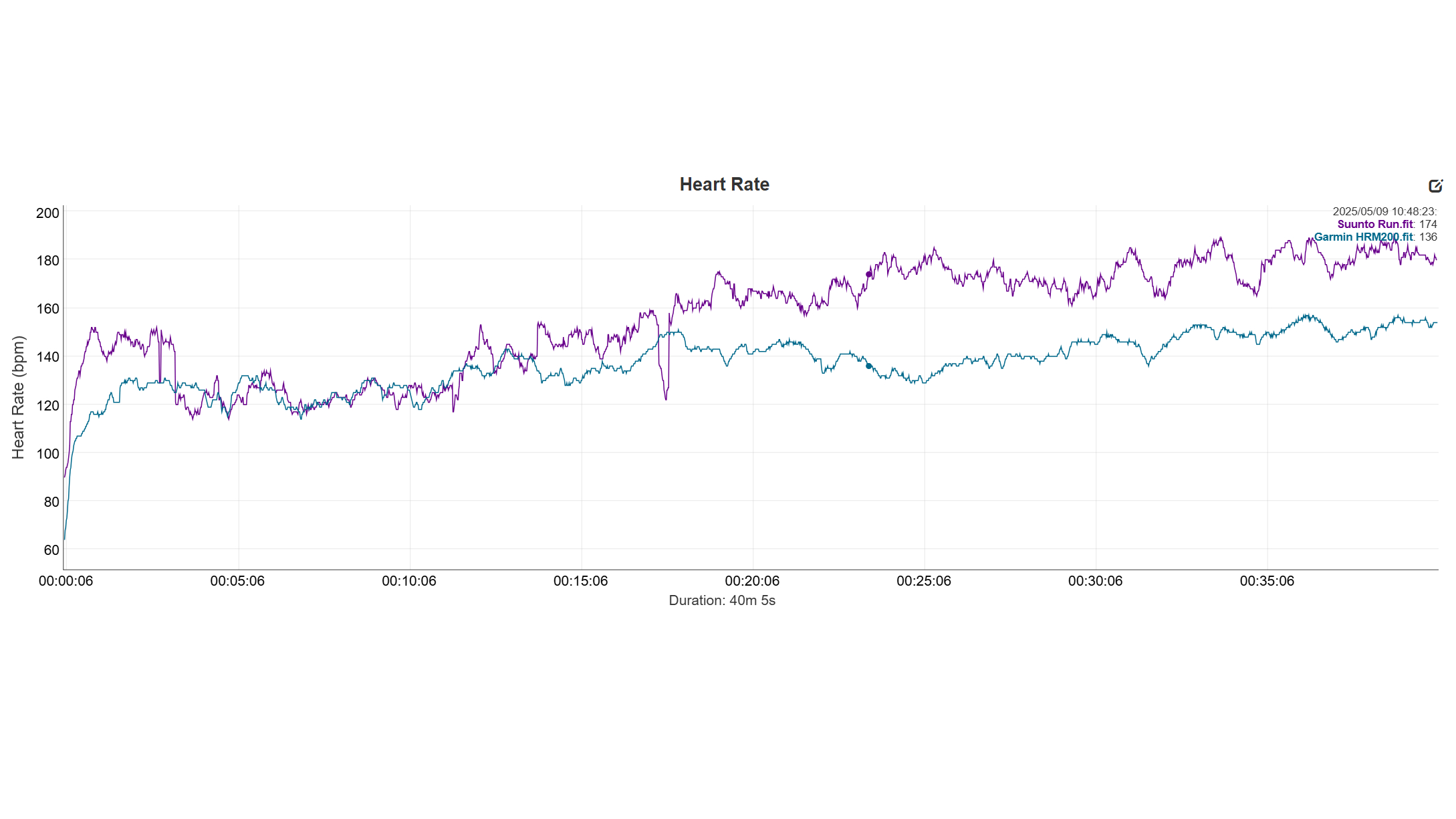
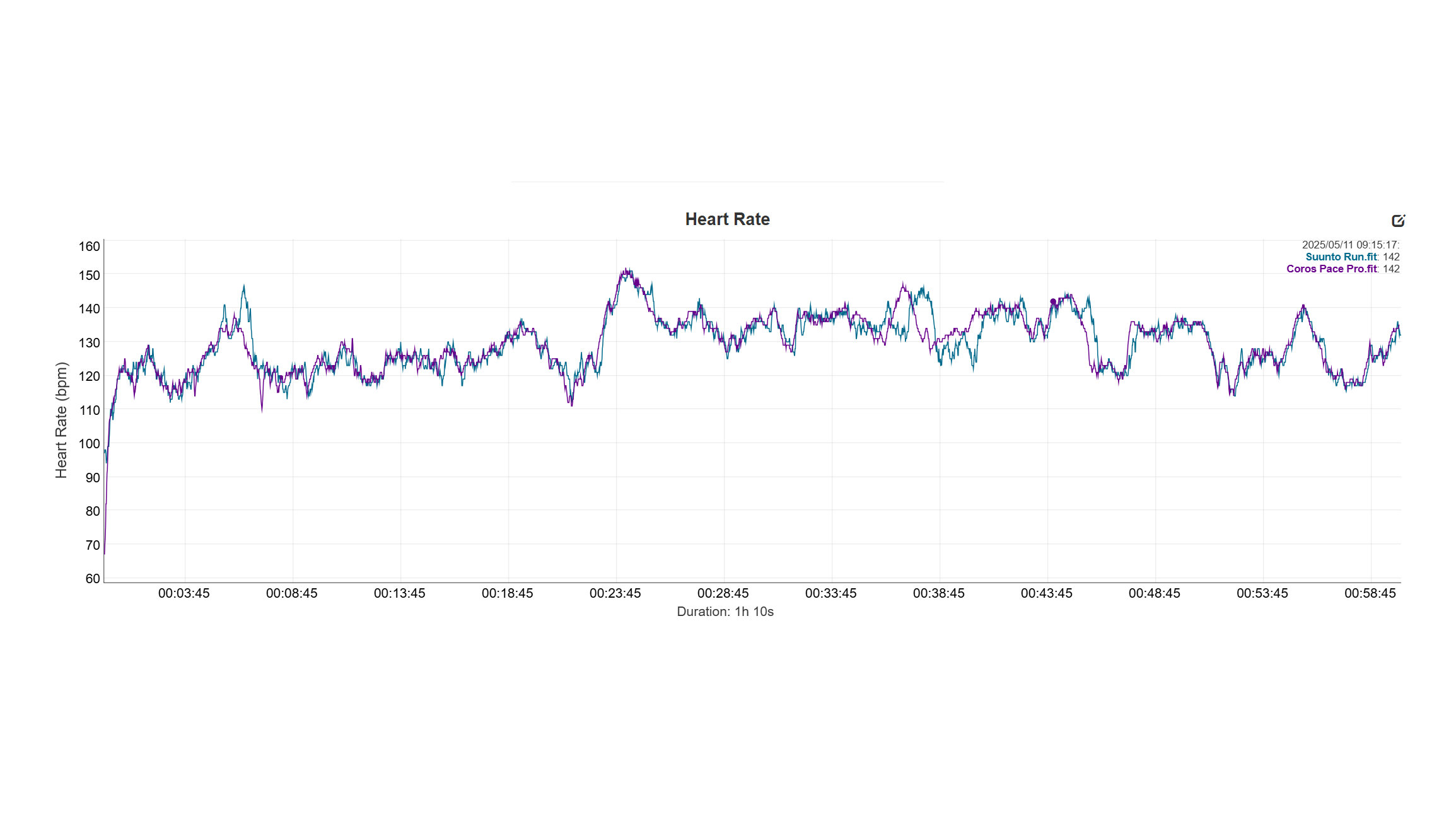
I compared the Suunto Run’s readings to those of a chest strap monitor in all my workouts, and for the most part it was spot on for bike rides, strength and yoga sessions, but did go wrong occasionally during runs, reading too high.
It has been spot on during my last few runs, including an interval session, but if you plan to use heart rate to guide your effort during workouts, or simply want the best data going into the training analysis on the watch, I’d pair a chest strap myself, something I do with pretty much every watch owing to the fallibility of optical heart rate tracking.
Suunto Run review: Activity and sleep tracking
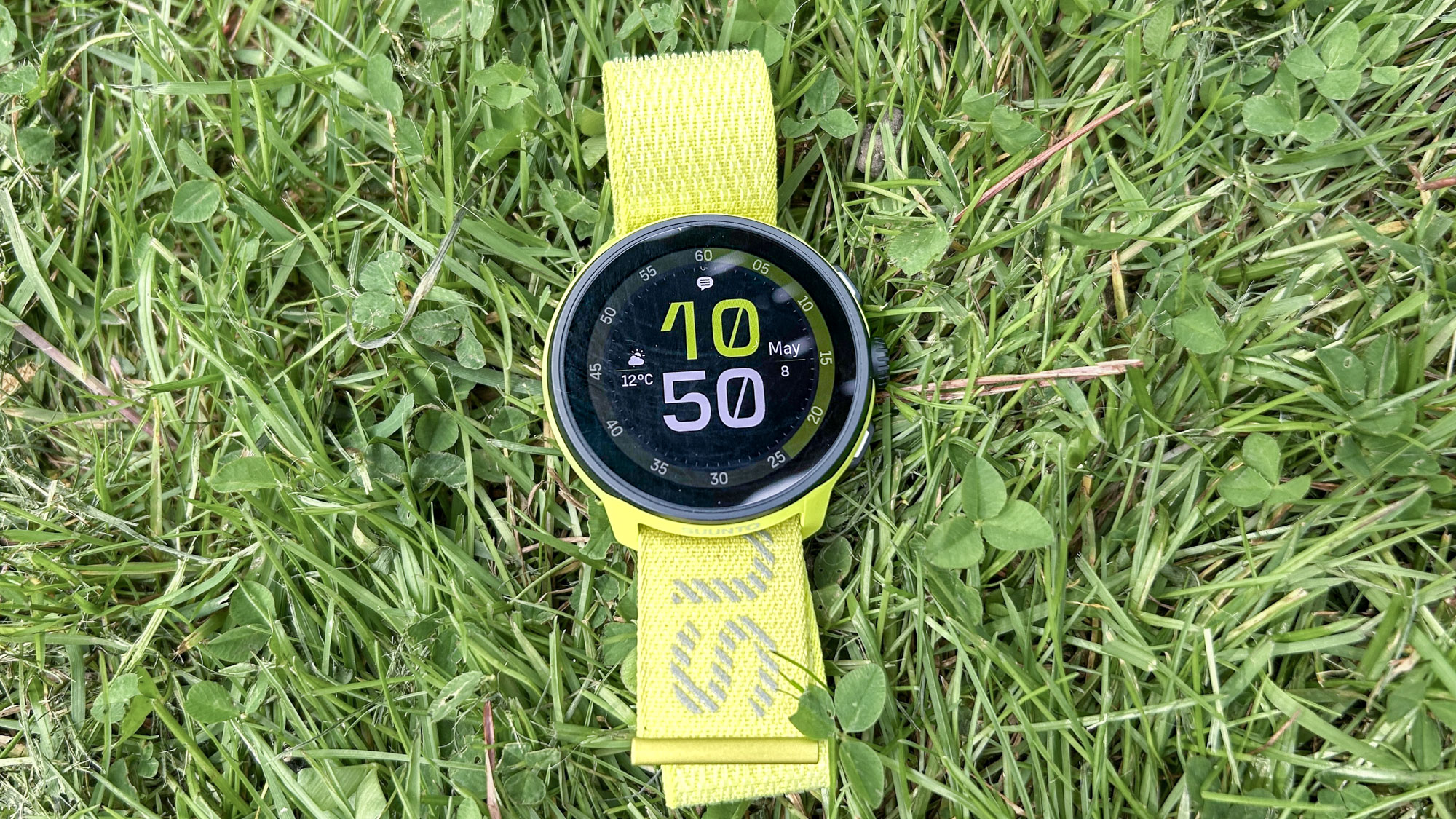
As well as being a sports watch, the Suunto Run also tracks your daily activity, recording your steps and active calories buried, as well as notifying you if you’ve been sedentary for two consecutive hours.
The step counts were consistently noticeably lower than other watches measured during my time testing the Suunto Run, something I’ve also noticed with other Suunto watches.
This could be down to the sensitivity of the pedometer on the watch, or what Suunto classes as a step, but if you’re something who aims to smash a step goal each day, it might be a cause of frustration.
I also found that the sleep tracking was prone to errors, sometimes recording that I only slept three to four hours when I’d slept seven or eight, or showing my whole night as light sleep with no spells in deep or REM.
However, during the time I was testing the watch I did have a trip to Japan, which played havoc with my sleep schedule in general, so the amount of nights I was able to get data from the watch was reduced.
Suunto Run review: smart features
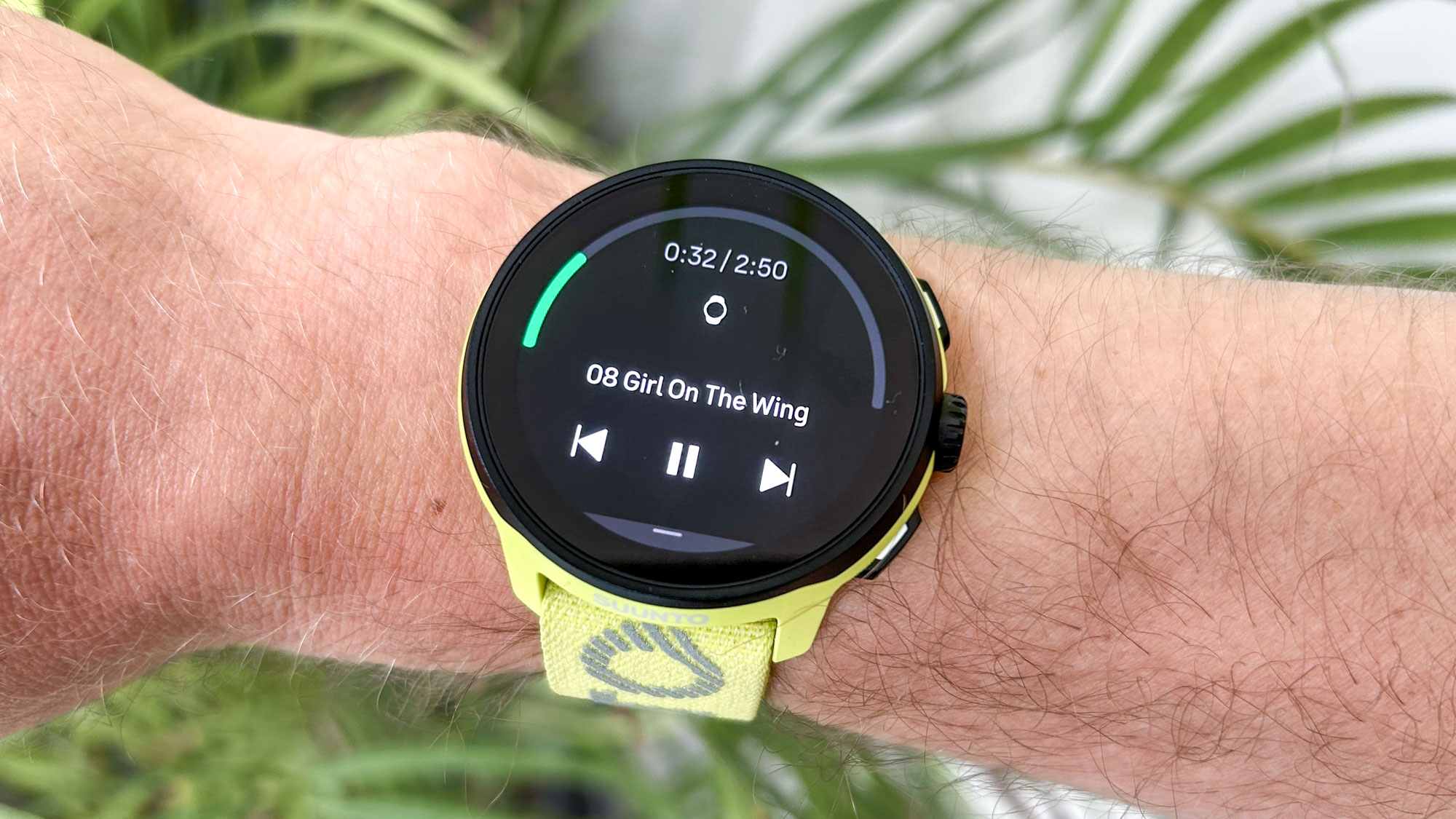
The Suunto Run is the first Suunto sports watch to offer music storage, supporting MP3 files that you drag and drop onto the watch via a computer. You can then organise the files into playlists using the Suunto app.
I found the process of getting music onto the watch arduous — it took several attempts and resets for my laptop to recognize the Suunto Run was plugged in and it takes a couple of minutes to transfer one album onto the watch.
This is not as convenient as the support for streaming services like Spotify offered by Garmin watches, as well as smartwatches, but if you have MP3 files available for music or podcasts then you can listen without needing to bring your phone with you.
Along with music storage there are basic smart features like notifications and a weather forecast widget, and users in China can use the Suunto Run for payments using Alipay.
You don’t get the offline maps available on the Race and Race S, but there is basic breadcrumb navigation on the Suunto Run.
Suunto Run review: battery life
Suunto says the Run will last up to 12 days in watch mode, and it offers 20 hours of GPS tracking in the most accurate mode that uses dual-band GPS.
If you have the screen set to always-on, you’ll have to charge it regularly, however. I had the screen always-on and if I was running every day with the watch I had to charge it after three or four days.
This isn’t too bad given the small size of the watch and the fact it has an AMOLED display, and you can extend the time between charges by having the screen set to raise-to-wake outside workouts.
However, Coros watches in particular last longer, and the AMOLED Coros Pace Pro lasts me five or six days with the screen always-on.
Should you buy the Suunto Run?
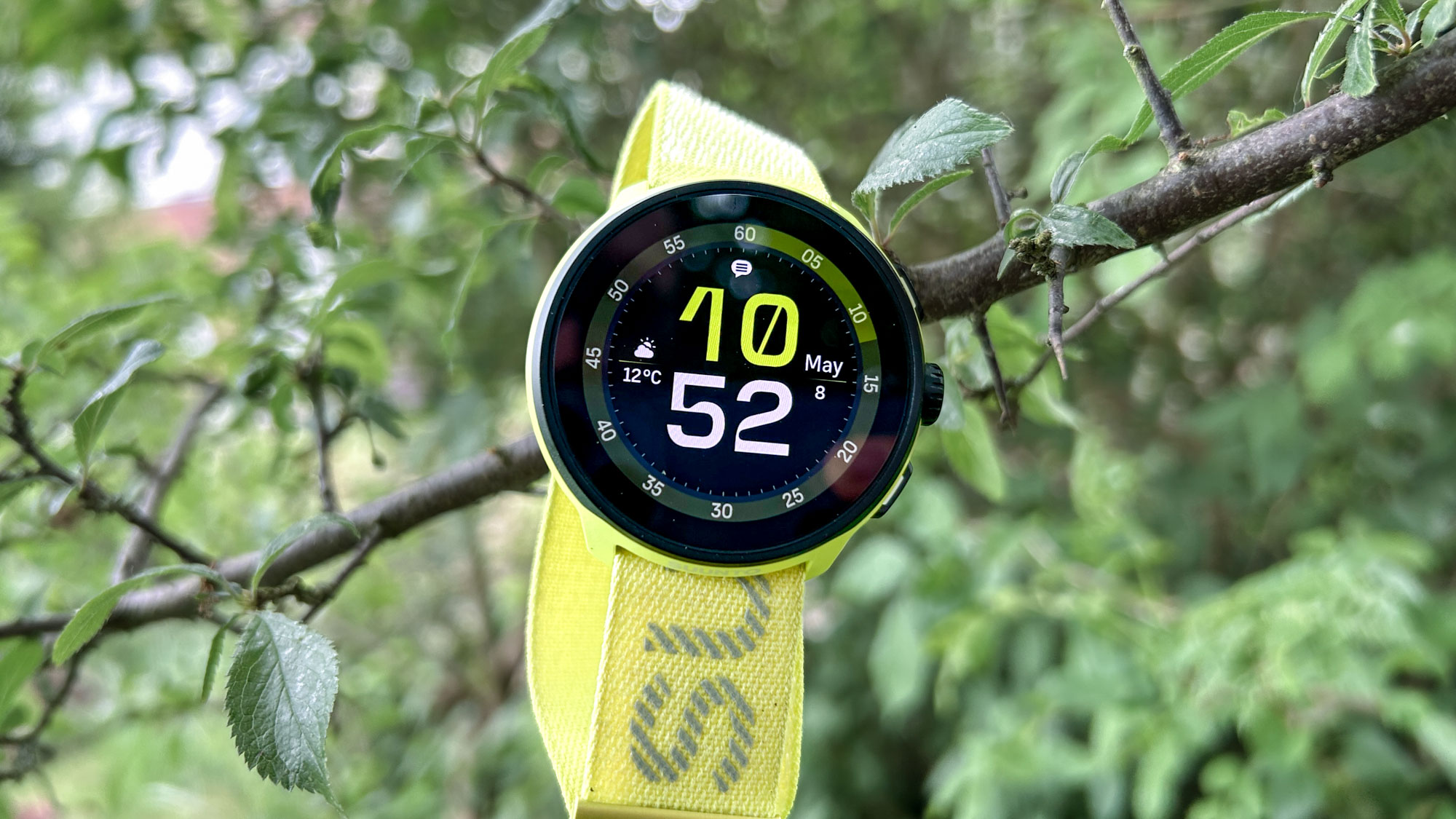
It’s not perfect, but the Suunto Run does an excellent job of offering the key features runners need at a price that will have alarm bells ringing for other brands. It’s an especially good option for new runners, but even as a keen marathoner the Suunto Run ticks all the boxes I need.
The equivalent Garmin watch is the Forerunner 165, which costs $299 for the music model, while the cheapest Coros AMOLED watch is the Pace Pro at $349 and the Suunto Run is close to the $229 price of the Coros Pace 3, which has a memory-in-pixel display.
However, the Forerunner 165 is often reduced to $249 and it does offer better smart features and a more polished user interface than the Suunto Run.
For its part, the Suunto has dual-band GPS and more training analysis than the Forerunner 165, and allows more data screen customization in sports profiles too. Both are great options to consider if you’re looking for an affordable running watch.
With the addition of the Run, Suunto’s range of watches now caters to all levels and price points well. The Suunto Vertical and Race cater to keen athletes, while the Race S is a great mid-range watch with maps and a more premium design than the Run.
The Suunto Run is the pick of the bunch for value, in my opinion, and it has a good case for being the best value sports watch available from any brand.

Nick Harris-Fry is an experienced health and fitness journalist, writing professionally since 2012. He spent nine years working on the Coach magazine and website before moving to the fitness team at Tom’s Guide in 2024. Nick is a keen runner and also the founder of YouTube channel The Run Testers, which specialises in reviewing running shoes, watches, headphones and other gear.
Nick ran his first marathon in 2016 and became obsessed with the sport. He now has PBs of 2hr 25min for the marathon and 15min 30sec for 5K. Nick is also a qualified Run Leader in the UK.
Nick is an established expert in the fitness area and along with writing for many publications, including Live Science, Expert Reviews, Wareable, Coach and Get Sweat Go, he has been quoted on The Guardian and The Independent.
You must confirm your public display name before commenting
Please logout and then login again, you will then be prompted to enter your display name.
